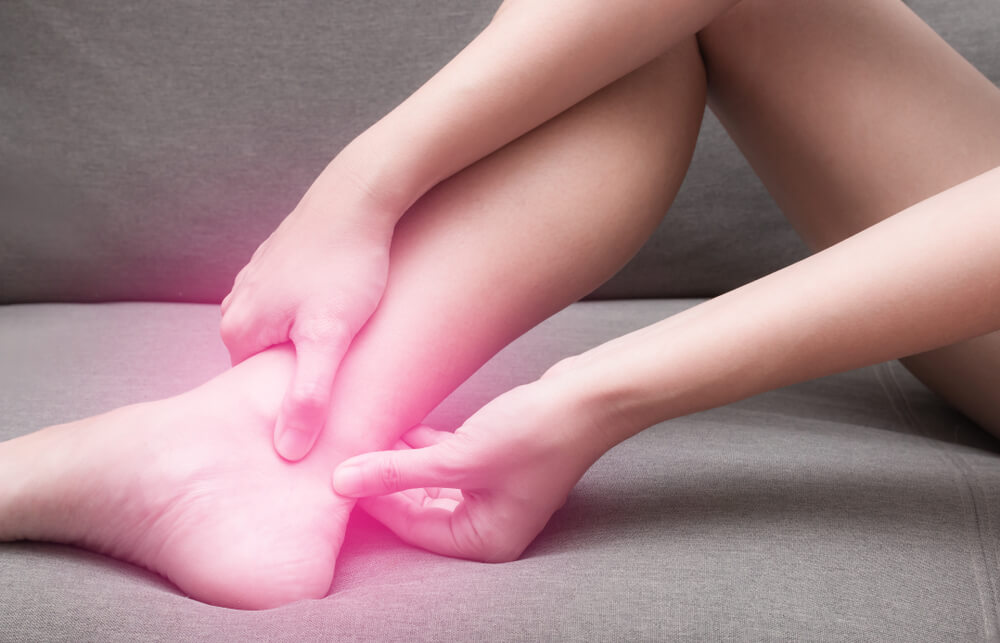How to Treat Tendonitis Naturally?
Table of Contents
What Is Tendonitis?
Tendons are thick fibrous strings that attach the muscle to the bone. Tendonitis is caused when a tendon is inflamed or irritated, causing pain and swelling outside a joint.
It is most common around your heels, knees, wrists, shoulders, and elbows. But that does not imply that it can not occur in any other tendons.
According to the US Bureau of Labor Statistics(1), more than 70000 people miss work in a year because of tendonitis.
Tendonitis can occur anywhere, but it mostly affects the heels, knees, wrists, elbow, and shoulder. Tendonitis in these areas has specific names.
- Achilles tendon
- Jumper’s knee
- Tennis elbow
- Golfer’s elbow
- Swimmer’s shoulder
- Pitcher’s shoulder
Tendonitis can mostly be treated through exercise and physiotherapy but let us discuss some effective home remedies.
- How to Treat
- FAQs
How to Treat Tendonitis at Home?
The first and foremost course of treatment advised by the doctor also is exercise and physical therapy. We will study the various forms of exercises for separate conditions of tendonitis.
1. Elbow

Tendonitis in the elbow is of two types – tennis elbow and golfer’s elbow. Tennis elbow is caused by repetitive outward motion of the elbow and Golfer’s elbow is caused because of recurring inward movement of the elbow.
The exercises that can help relieve the pain are discussed under –
a. Fist Clench
- Sit comfortably at a table and place your arm on the table.
- Hold a ball or rolled hand towel in your hand.
- Squeeze the ball/hand towel for 10 seconds and release it.
- Do 10 reps of this exercise.
b. Wrist Extension
- Gently bend your wrist backward and hold for 15 seconds.
- Do 2 sets of 15 each.
c. Wrist Flexion
- Gently bend your wrist backward and hold for 15 seconds.
- Do 2 sets of 15 each.
d. Wrist Turn
- Band the elbow at 90 degrees and extend your hand outwards, palm facing up.
- Turn the wrist slowly until the palm is facing down.
- Hold the position for 5 seconds.
- Do 2 sets of 15 each.
2. Wrist
Wrist tendonitis occurs when you overwork the tendons connecting the muscle to the bone around the wrist. There is a pain in the wrist and stiffness in the movement of the wrist, especially right after waking up.
The exercises elaborated underneath can help relieve the pain.
a. Wrist extension stretch
- Stand at a table with your palm down and fingers flat.
- Keep your elbows straight and move your body weight forward.
- Hold the position for 15 seconds and repeat twice.
b. Wrist flexion stretch
- Stand at a table with your palm facing up, fingers flat and pointing towards your body.
- Keep your elbows straight and lean away from the table.
- Hold this position for 15 seconds and repeat twice.
c. Side to side
- Move your wrist from side to side in a handshake motion.
- Hold on each side for 5 seconds.
- Do 2 sets of 15 each.
3. Achilles

Achilles tendon connects the calf muscle to the heels. Overuse and injury of this tendon cause Achilles tendonitis.
It is treatable by proper exercises that can be done at home. The same is mentioned further.
a. Standing calf stretch
- Stand facing a wall with your hands on the wall at eye level.
- Keep your injured leg back with the heel on the floor, and other leg bent in front.
- Move the toe of your injured heel slightly inward.
- In this position, exert some pressure on the wall as if pushing it.
- You will experience a stretch in the back of your calf. Hold this position for 15 seconds and repeat 3 times.
b. Sitting heel raises
- Sit on a chair with your back straight and firm.
- Lift your toes keeping the heels on the floor.
- Hold this position for 5 seconds.
- Next, lift your heels keeping the toes on the floor.
- Release this position after holding for 5 seconds completing a set.
- Repeat the set 15 times.
c. Bilateral heel drop
- Stand on the edge of a step and lift your toes with heels in the air.
- Hold the railing with one hand for support.
- Slowly move the weight to the injured leg by lifting up the uninjured leg and lowering the heel of the injured leg. All the while keep holding the railing for support.
- Hold the position for 5 seconds and follow by transferring the weight back to the uninjured leg and coming back in lifted toes position.
- Repeat this 10 times.
4. Shoulder

Shoulder tendonitis is the inflammation of your rotator cuff. The tendons in your shoulder connect your upper arm to the shoulder blade. This can be treated at home with the help of some exercises mentioned below
a. Doorway stretch
- Stand in a doorway and stretch your arms to the side at shoulder height.
- Grip the sides of the doorway and lean forward through the doorway.
- Shift your weight on the toes until you feel a slight stretch.
- Hold this position for 5 seconds and do 2 sets of 10 each.
- Be cautious and do not overstretch.
b. Reverse fly
- Stand with your feet shoulder-width apart and knees slightly bent.
- Keep your back straight and bend forward.
- Take light weights in each hand and extend your arms. Move them away from the body but do not raise them above the shoulder height.
- Squeeze your shoulder blades in this process.
- Do 2 sets of 10.
c. Side-lying external rotation
- Lie on the side of your uninjured arm.
- Place the injured arm close to your body and bend the elbow at 90 degrees such that your forearm is resting across your abdomen.
- Hold a lightweight in your injured hand. With the elbow stuck to your side lift the weight towards the ceiling.
- Hold the weight up for a few seconds, come back to the start position slowly and repeat this process 15 times.
5. Bicep

Bicep tendonitis is caused by repetitive overhead motions. It affects the tendons in your bicep connecting the biceps muscle to the shoulder and elbow. Like all other tendonitides, this can also be treated at home with the help of some exercises. The same is mentioned below.
a. Elbow Flexion and Extension
- Stand straight with your shoulder blades pulled back.
- Take the palm of your injured hand up towards the shoulder in a bicep curl motion.
- Go back to the start position.
- Do 2 sets of 15 each.
b. Biceps Stretch
- Stand straight facing a wall. Keep a distance of about 6 inches from the wall.
- Extend your injured hand and place the thumb side of the hand on the wall with palm down.
- Keep the arm straight and rotate your body to the opposite side until you feel a stretch in your biceps.
- Hold this position for 15 seconds.
- Do 2 sets of 15 each.
c. Sleeper Stretch
- Lie on your injured side with your knees and hips flexed.
- Extend out the injured arm.
- Bend the elbow of your injured arm 90 degrees, such that the fingers are pointing at the roof.
- Use your other hand to push the injured arm down gently toward the floor.
- Hold the stretch for 30 seconds and repeat 3 times.
Apart from the above-mentioned exercises, there are alternate remedies also to help with the inflammation caused by tendonitis. The popular ones are cold and hot compresses.
The question is, whether to do a cold compress or a hot compress.
Mayo Clinic(2), USA suggests that when the injury is fresh one should apply a cold compress. Ice helps numb the pain and constricts the blood vessels reducing the swelling and inflammation. So for the first 3-4 days of the injury, you should use an ice pack. Ice the area for 15-20 minutes every 5 to 6 hours.
After the first few days, you can move to heat therapy. The heat helps the muscles to relax soothing the pain and increasing the blood flow to the injured area that helps in faster healing.
Tendonitis can disrupt your daily life because of movement restrictions and constant pain in affected areas. It is easy to get attracted to faster and simpler ways of treating it at home. But, self-treating a condition and avoiding standard care can cause more serious damage. We suggest if you suspect tendonitis in any part of your body immediately visit the doctor for a correct diagnosis. Once it is established you have tendonitis these home remedies can be used for assisting with the healing process.
Also Read: How to Treat Tendonitis Naturally?
FAQs
1. Can we use turmeric for tendonitis?
Studies(3) suggest that the compound curcumin present in turmeric can be used to inhibit mechanisms that spark inflammation.
2. Is it a good idea to get a massage for tendonitis?
The injury should not be massaged until after 48 hours of the occurrence. Post that friction massage therapy or cyriax massage therapy could be used. Both these therapies help in collagen boost, thus aiding the healing process.
3. Can tendonitis occur in any body part?
Yes, tendonitis can occur anywhere tendons are present. But the most common areas of injury are shoulder, elbow, wrist, knee, and heels.




